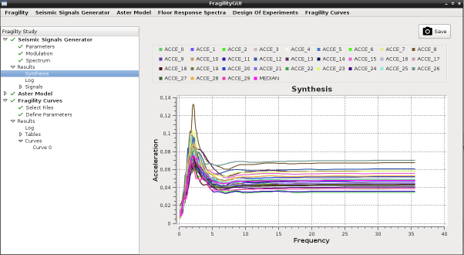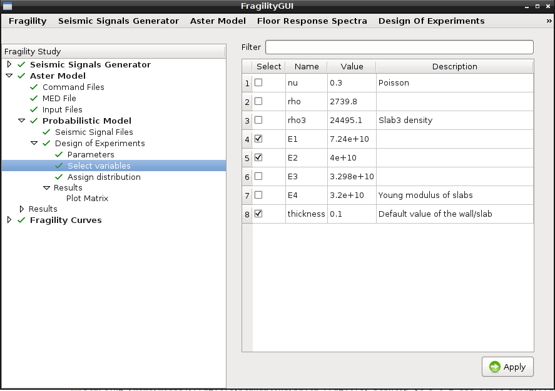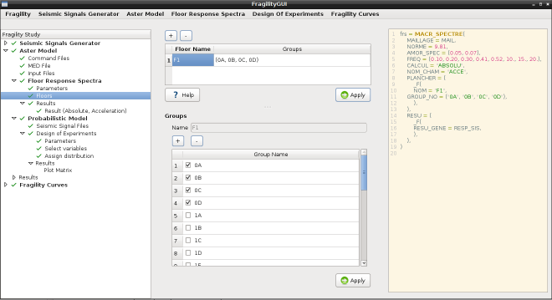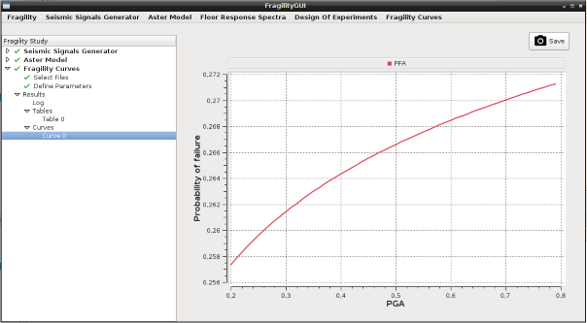In the nuclear field, the objective of the probabilistic seismic safety analysis (PSA) is to quantify the seismic risk, considering the random load (earthquake) and the uncertainties in the data. The objective of the approach is then to calculate the fragility curves.
The construction of these curves was previously entrusted to experts using the EPRI method. The idea is to take advantage of the increase in calculation performance to implement a numerical approach. At the same time, this approach makes it possible to calculate the floor spectra resulting from this consideration of the hazard.
The Fragility module was therefore developed in partnership with EDF’s R&D teams to meet this need by defining the methodology to be applied as well as possible.
Fragility is now a tool to evaluate the failure of mechanical structures subjected to dynamic loads. It is based on the powerful Salome platform on one hand, and uses the “GENE_ACCE_SEISME“, “MACR_SPECTRE“ and “POST_DYNA_ALEA“ processing and post-processing commands from Code_Aster on the other hand. The functionalities of OpenTURNS are used to propagate uncertainties.
As such, it can be used to:
- Construct artificial seismic accelerograms from a target spectrum

- Construct designs of experiments for all the variables of the Code_Aster model

- Manage the input and output files of Code_Aster and distribute the calculations,
- Evaluate the mean, median and fractile spectra at different points of the structure resulting from the propagation of uncertainties.

- Evaluate the probability that the failure criterion, e.g. the maximum stress resulting from a structural calculation, reaches a threshold established as a function of seismic intensity (Peak Ground Acceleration type).

This tool, developed in C++, can be run in “Standalone” mode or integrated into the Salome platform.
Fragility functionalities implementing a probabilistic approach, specific to civil engineering, for buildings during a seismic analysis, can be extended to the processing of various equipment in different fields of industry.
Other solutions for civil engineering are developed by Phimeca, such as the design of reinforcement for reinforced concrete structures, via our ACT Reinforcement Design tool integrated into the ANSYS portal applications.
